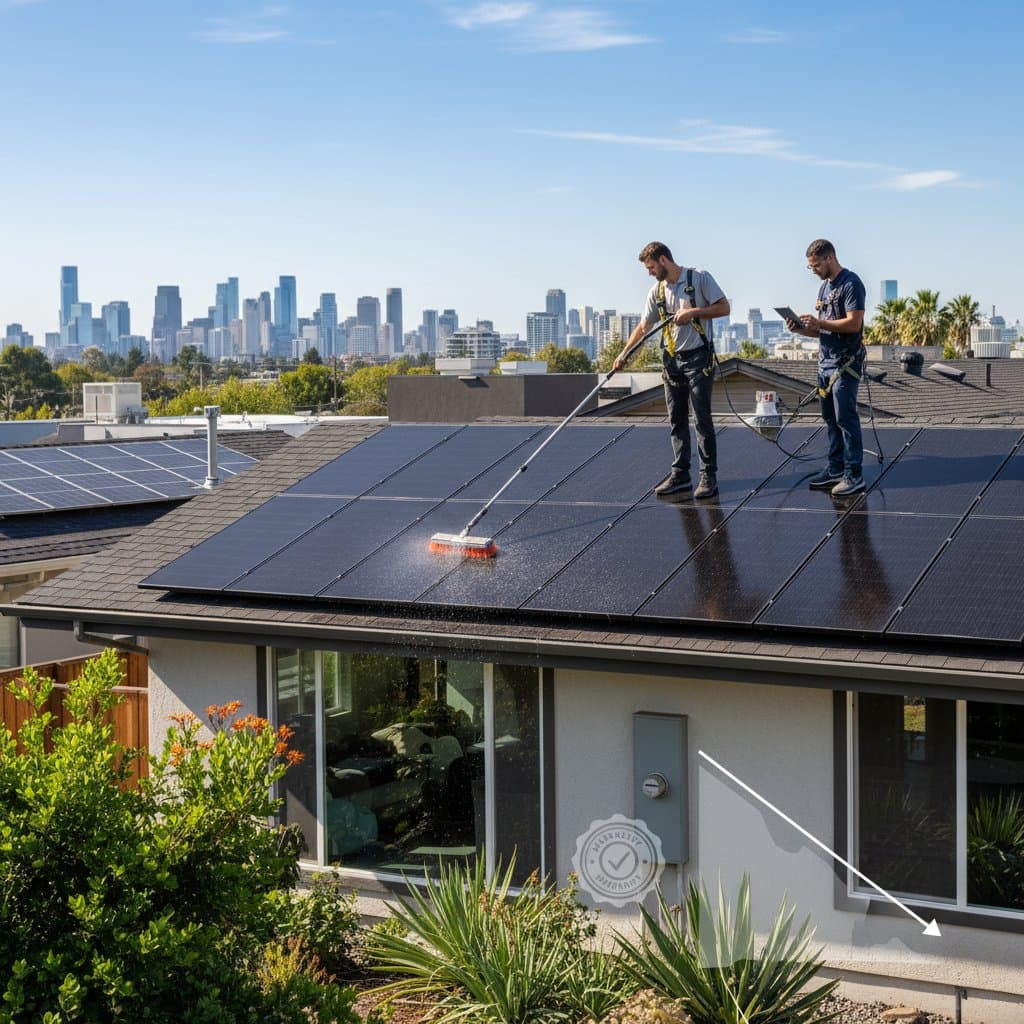Understanding the Surge in Solar Panel Maintenance Costs
Solar panel maintenance expenses have risen by 35 percent in recent years, impacting homeowners who rely on these systems for energy savings. This increase stems from several interconnected factors. Labor shortages in the renewable energy sector have driven up technician wages, while supply chain disruptions have inflated the prices of specialized cleaning solutions and replacement parts. Additionally, stricter safety standards imposed by regulatory bodies require more rigorous protocols, further elevating service fees.
Homeowners typically encounter costs of $180 to $350 for routine cleaning sessions, which involve removing dust, pollen, and debris. Comprehensive inspections and repairs can reach $800 or more, particularly if electrical components or mounting hardware need attention. These figures vary by location, system size, and access difficulty, but the overall trend underscores the need for proactive planning to mitigate financial strain.
Essential Safety Precautions for Maintenance
Before attempting any solar panel maintenance, prioritize safety to avoid injury or system damage. Wear non-slip shoes to navigate rooftops securely, along with durable gloves to protect hands from sharp edges or chemicals. Eye protection is crucial when handling cleaning agents or inspecting high-voltage areas.
Inspect panels carefully during maintenance. Stop work immediately if you detect loose wiring, signs of corrosion, or cracked glass surfaces. Such issues demand the expertise of a professional to prevent electrical hazards or structural failures. Always ensure the system is powered down before touching components, and consult your installation manual for specific guidelines.
Preparing for Safe Cleaning
Gather appropriate tools before starting. Use a soft-bristle brush or microfiber cloth to gently remove debris without scratching protective coatings. Deionized water in a low-pressure sprayer works best to avoid mineral deposits. For ground-mounted panels, a stable ladder or scaffold provides safe access; avoid extending beyond recommended heights.
Deciding Between DIY and Professional Services
Homeowners with accessible, ground-level panels may handle basic cleaning themselves, saving on labor costs. This approach suits flat or low-slung installations where reaching the panels poses minimal risk. However, professional intervention becomes essential in more complex scenarios.
When to Hire a Professional
Engage a licensed solar technician under these conditions:
- Panels are installed on steep or elevated roofs, where fall risks are high.
- Electrical faults appear, such as inverter error codes or fluctuating output readings.
- Birds, rodents, or insects have nested beneath panels, potentially causing blockages or damage.
- Your warranty specifies that only certified services maintain coverage.
Professionals arrive equipped with specialized cleaning solutions that preserve anti-reflective coatings and seals. They also deploy diagnostic tools to verify system performance, ensuring efficiency without voiding guarantees. Selecting insured experts minimizes liability and guarantees quality workmanship.
Establishing a Maintenance Routine for Optimal Performance
Regular upkeep extends the lifespan of a solar array to 25 years or beyond. While panels themselves prove durable, accumulated dirt and subtle electrical problems can diminish efficiency by 10 to 20 percent over time. A consistent schedule addresses these concerns systematically.
Recommended Maintenance Tasks
Adopt this routine to sustain peak operation:
- Clean panels: Perform every six months in standard conditions, or quarterly in regions with high dust, pollution, or proximity to the coast.
- Conduct inspections: Review wiring, mounting brackets, and inverter functionality annually, or after severe weather events.
- Trim surrounding vegetation: Regularly prune trees and shrubs to eliminate shading that reduces energy capture.
- Monitor production data: Record monthly output via your system's app or meter to identify deviations early.
These steps not only boost immediate power generation but also avert progressive degradation, such as hotspot formation from uneven soiling.
Addressing Common Questions on Solar Maintenance
How Do I Know If Cleaning Is Necessary?
Examine panels for visible dullness, heavy dust buildup, or pollen layers. A more reliable indicator involves tracking energy output; if production falls by more than 10 percent from baseline levels, schedule cleaning promptly. Use monitoring software provided with most systems for precise comparisons.
Is Rainfall Sufficient for Cleaning?
Occasional light rain dislodges loose particles but fails to eliminate stubborn residues like bird droppings or sap. Heavy storms offer better results, yet manual intervention remains advisable at least once a year to restore full efficiency. In arid climates, rain alone proves inadequate.
How Do Rising Costs Impact Investment Returns?
The elevated expenses may extend the payback period by a few months for typical installations. However, diligent maintenance avoids costly repairs, such as inverter replacements exceeding $1,000. Over the system's life, savings from reliable energy production far outweigh these incremental outlays.
Is Tap Water Suitable for Cleaning Panels?
Tap water serves for initial rinsing, but hard water often leaves mineral streaks that attract more dirt. Opt for distilled or filtered water during the final rinse to achieve streak-free surfaces and preserve coating integrity. In areas with soft water, tap usage poses fewer issues.
Do Maintenance Contracts Provide Value?
Contracts prove beneficial for expansive systems or hard-to-access rooftop arrays. They offer predictable pricing, priority scheduling, and compliance with warranty stipulations. Over multiple years, bundled services often reduce per-visit costs by 15 to 20 percent compared to one-off hires.
Safeguarding and Maximizing Your Solar Investment
The 35 percent uptick in maintenance costs highlights the importance of a strategic approach rather than diminishing the value of solar energy. Obtain multiple quotes from reputable providers, insisting on detailed breakdowns of labor, materials, and any potential add-ons. Verify that technicians hold current certifications and adequate insurance coverage.
For installations with straightforward access, incorporate light DIY cleaning every few months to bridge gaps between professional appointments. Maintain meticulous records of all service dates, cleaning methods, and performance metrics. This documentation supports warranty claims, facilitates troubleshooting, and enhances property resale appeal by demonstrating diligent care.
By blending informed self-maintenance with periodic expert oversight, homeowners navigate rising expenses effectively. This balanced strategy ensures sustained efficiency, minimizes unexpected disruptions, and secures long-term financial benefits from clean, renewable power generation.



